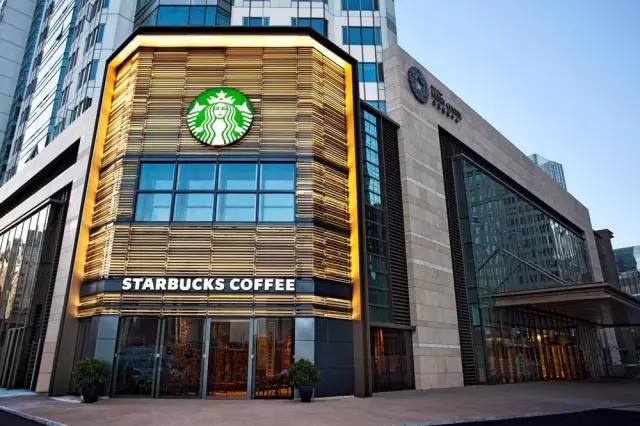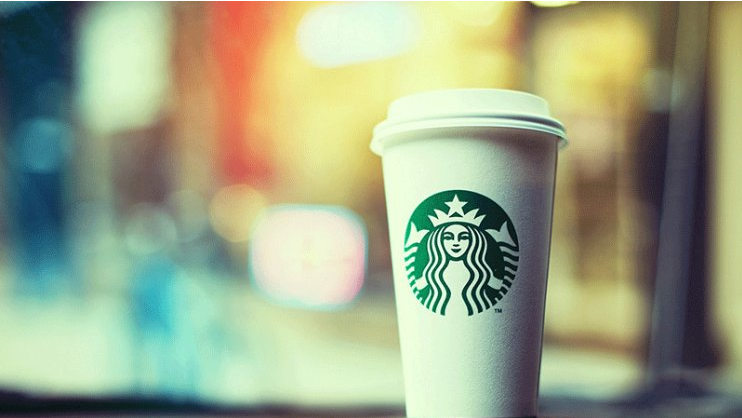How much is a Starbucks store worth? Finally got the answer.
Follow the caf é (Wechat official account vdailycom) and found that Beautiful Cafe opened a small shop of its own.
Although new stores are opened in the Chinese market almost every day, this speed is also difficult to meet Starbucks' ambitions in China. According to Chinese mainland, Starbucks plans to operate more than 5000 stores by 2021, compared with the current 2800.
The love of Chinese customers underpins Starbucks' expansion ambitions. Although some people think that Starbucks has become a "bad street", the queues at Starbucks gates can still be seen in some stores in some areas.
On July 27th, Starbucks announced that it would buy the remaining 50 per cent of its joint venture in East China for about $1.3 billion in cash to fully manage the entire Chinese mainland market, clearing the way for further expansion.

The single store in Jiangsu, Zhejiang and Shanghai is valued at about 13 million yuan.
According to the legal Evening News, on the evening of the 27th, Starbucks Coffee Company announced that it had reached a formal agreement with its long-term joint venture partners Uni-President Enterprise Co., Ltd. and Unified Superstore Co., Ltd. will buy the remaining 50% of Starbucks East China Market Joint Venture (Shanghai Unified Starbucks Coffee Co., Ltd.) for about $1.3 billion (8.759 billion yuan) in cash.
This is Starbucks' biggest acquisition to date. Uni-President's exit means that all Chinese mainland stores in Starbucks will be completely owned and operated by themselves.
When the deal is completed, Starbucks will take 100 per cent ownership of about 1300 stores in Jiangsu, Zhejiang and Shanghai. East China is one of Starbucks' most important markets in China. Shanghai has nearly 600 Starbucks stores, which is currently the city with the largest number of Starbucks stores in the global market.
Based on the deal, Starbucks stores in Jiangsu, Zhejiang and Shanghai are valued at about 13.4754 million yuan.
Goal: more than 5000 stores in 2021
So, why did Starbucks achieve all direct operations in Chinese mainland?
Kevin Johnson, president and CEO of Starbucks Coffee, said that fully and directly managing the entire Chinese mainland market would help "achieve the goal of increasing the number of stores from the current 2800 to 5000 by 2021". He said it was a key step in advancing Starbucks' strategy of "diversifying the Chinese market to achieve Starbucks' long-term profitable development in the Asian market."
Every editor (WeChat: nbdnews) notes that it is Starbucks' consistent "routine" to choose local partners when expanding overseas, adopt a franchise model, and then take back control when the market is mature.
According to 36 krypton, Starbucks opened its first Starbucks in China in 1999 and has three long-term partners, Beijing Sanyuan Group and Meida, Unification and Hong Kong Meixin Group, which are joined by some funds. After China allowed wholly foreign-owned enterprises to open stores in 2005, Starbucks bought back shares in Meida, Sanyuan and Meixin in 2006, 2007 and 2011, taking over stores in central, northern and southern China. The situation is similar in the Japanese market, where Starbucks bought a stake in its Japanese partner for $913.5 million in 2014.
After the full direct operation of Chinese mainland, Starbucks will have 100 per cent decision-making power over Chinese companies' business structure and store expansion, and will be able to push ahead with store expansion plans in China at its own pace, Krypton reported.
If the franchise or franchisee model is adopted, the resistance in the store transformation is generally greater, and the brand often has to pay a higher price, such as McDonald's in the promotion of fresh beef hamburger. it has also been opposed by many franchisees.
Expand rapidly in the Chinese market
According to Starbucks' plan, the Seattle-based coffee chain will next open 500 stores in China each year. Starbucks' confidence comes from the rapid growth of China's coffee market and the love of Chinese consumers for Starbucks.
According to IOC, per capita coffee consumption in China has been increasing at a rate of 30 per cent year by year since 1998, while the number of coffee shops in large and medium-sized cities is also expanding steadily at a rate of 25 per cent a year.
Reviewing the history of Starbucks' development in China, Starbucks opened its first store in Beijing before 1999 and opened about 30,50 stores a year for the next 10 years. The pace has accelerated significantly since 2012, with results showing that Starbucks added 204 stores in China in 2012, 317 in 2013 and almost every day in 2014. Compared with other regions where there is even a decline, China has become the fastest-growing market for Starbucks stores.
Starbucks' coffee market share in China has also increased from 12.6% in 2009 to 37% in 2014, according to Euromonitor.
Starbucks already "Bad Street"?
However, Starbucks' expansion plans are not smooth.
On the one hand, with the increasingly fierce competition in the Chinese coffee market, Starbucks is not the only coffee brand to expand its stores in the Chinese market. According to the China Business Daily, as of April 2016, the number of Pacific Coffee stores worldwide had reached 477, including 329 in Chinese mainland, which will expand its business in the mainland through franchise stores. According to public information, the total number of British COSTA coffee stores in China reached 344 in 2014 and plans to double the number of stores to 900 by 2020.
On the other hand, some analysts believe that with the rise of domestic independent coffee shops with a large number and rapid growth, Starbucks has successfully cultivated a coffee culture in emerging markets, while once the local coffee culture in emerging markets is formed, Starbucks' standardized fast food model will be snubbed, and there is even the possibility of being forced to withdraw from the corresponding market.
The withdrawal of Starbucks from the Australian and Italian markets, for example, is a failure, both of which have developed a very strong own coffee culture.
Meanwhile, according to foreign media reports compiled by Observer, Starbucks has long been regarded as a status symbol by China's emerging middle class, but some consumers say that Starbucks is already a "rotten street" in China. "if there are still photos of Starbucks sitting in Starbucks, it will be considered 'low'' by others."
Important Notice :
前街咖啡 FrontStreet Coffee has moved to new addredd:
FrontStreet Coffee Address: 315,Donghua East Road,GuangZhou
Tel:020 38364473
- Prev

Starbucks Coffee has completed its largest acquisition in history and will open 5000 stores in China in 2021
NASDAQ:SBUX Coffee Company (NASDAQ:SBUX) announced on July 27th that it has paid US $1.3 billion to fully acquire 50% of Starbucks East China Joint Venture owned by Uni-President, the largest acquisition in Starbucks history, which means that Starbucks will directly own 100% of the operation rights of more than 2800 stores in the Chinese mainland region in the future. Starbucks East China
- Next

All 379 Starbucks tea stores are closed. Is it more difficult to sell tea than coffee?
Following Cafe (official Wechat account vdailycom) found that it took Starbucks about four years or more to realize that Beautiful Cafe opened its own small shop selling tea and coffee. Just this morning, Starbucks announced that it would close all its 379 Teavana tea stores, which means that the company plans to enter the tea industry with
Related
- What ratio of water temperature and ground does the smart cup method use to press coffee? The difference between brewed coffee and filtered coffee?
- What is the standard process for the purpose of coffee cup testing? What is the difference between hand-brewed coffee and cup testing?
- How to use hand-brewed coffee paragon small golden balls? How does cold coffee lock in the aroma of coffee?
- Is American coffee black? What is the difference between American coffee and drip coffee?
- Unexpected! Well-known tea beverage brand Lele Tea will withdraw from the Zhengzhou market!
- Starbucks enters the fashion and beauty industry?! Netizen: Give me an ice American eye cream
- Why can American refills for free? The difference between Americano and American drip pot coffee
- Being chased out of the rain in front of Starbucks?! Store: Sheltering from rain under umbrellas poses a safety hazard
- The white moonlight has changed?! Lucky launches "Big Winter Pear American"
- Hand-brewed coffee three-stage method, high-sweet and universal brewing method to share! What does the high sweet water level of hand-brewed coffee mean?

